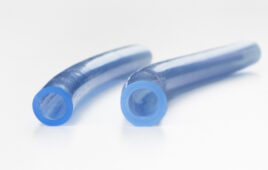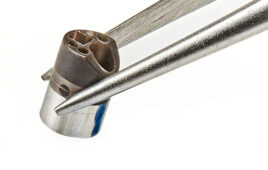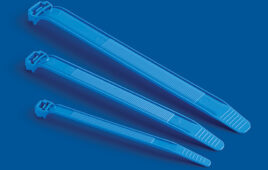Peter M. Galland/Vinyl Division Industry Manager/Ross Van Royen/TPE Division Senior Market Manager/Teknor Apex Company
 Medical tubing manufacturers have a variety of compound options, ranging from flexible plastics to TPEs to natural and synthetic rubbers. The most widely used material by far is PVC, which for decades has been employed in numerous types of tubing. More recently, TPEs have emerged as promising candidates and are in successful use by tubing manufacturers. Teknor Apex offers TPE compounds alongside its broad range of PVC products for tubing.
Medical tubing manufacturers have a variety of compound options, ranging from flexible plastics to TPEs to natural and synthetic rubbers. The most widely used material by far is PVC, which for decades has been employed in numerous types of tubing. More recently, TPEs have emerged as promising candidates and are in successful use by tubing manufacturers. Teknor Apex offers TPE compounds alongside its broad range of PVC products for tubing.
Flexible PVC compounds cost less than any current or proposed alternative material – a critical advantage for high-volume items such as IV sets. They’re available in a broad range of durometers, from soft to semi-rigid, and can be bonded to virtually all of the plastics typically used for molded connectors. The crystal clarity of PVC is obviously of great practical value in clinical use.
PVC can be sterilized with all standard methods. Special gamma-stable formulations exhibit minimal color changes following gamma irradiation. While general-purpose PVC compounds provide strength and chemical resistance for a wide range of applications, compounds are available for tubing requiring high tensile strength, abrasion resistance or kink-resistance at low durometers.
To make PVC flexible, phthalate esters, such as DEHP, have been the most widely used plasticizers for medical compounds. While issues have arisen concerning possible effects of these plasticizers on human health, there is no evidence that phthalates have had adverse health effects on humans after 50 years of use in medical devices. Nevertheless the issues have led some device manufacturers to consider PVC compounds containing alternative plasticizers. As a result, there are now multiple non-DEHP- and non-phthalate-plasticized PVC compounds on the market, including high-heat-stable products.
Another plasticizer-related issue is stress cracking in rigid connectors caused by the migration of plasticizer to the interface with the rigid component. It is most pronounced in the case of amorphous rigid materials like polycarbonate. Over the years tubing manufacturers have avoided serious crazing issues through appropriate design and other measures; it’s now possible to minimize stress cracking by using specially formulated, stress-crack-resistant rigid PVC compounds in place of polycarbonate or ABS for connectors.
The newest rigid PVC compounds for connectors are specially formulated to provide strength comparable to polycarbonate or ABS, along with excellent clarity, while reducing or eliminating the stress cracking that often occurs. Gamma-resistant grades are also available.
Among the alternatives to PVC for tubing, there is now a range of TPE compounds that mirror the clarity, haptics, physical properties, kink- and clamp-resistance of PVC while exhibiting enhanced gamma stability and flexibility. Unlike silicone rubber, they provide the processing ease and design freedom of thermoplastics, while avoiding concerns about extractables and curing agents. Compared with silicones and TPUs, the new TPEs offer an economic advantage.
Teknor Apex has developed TPE tubing formulations for use in a variety of medical assemblies. TPE tubing sets can be assembled using commercially available UV curable adhesives. In addition, a specialty-grade makes solvent bonding possible. Sterile TPE tubing welds are readily achievable using a Terumo welder or other comparable systems.
In developing TPEs for tubing, Teknor Apex worked with medical industry experts, processors and equipment suppliers to ensure that downstream processes like hole-cutting, tipping and printing would not be an issue. In addition, the company drew on decades of experience as a supplier of PVC compounds for tubing. Today, Teknor Apex takes a “polymer-neutral” approach to the medical tubing market, helping customers to select the right compound to meet a particular performance or regulatory requirement.




